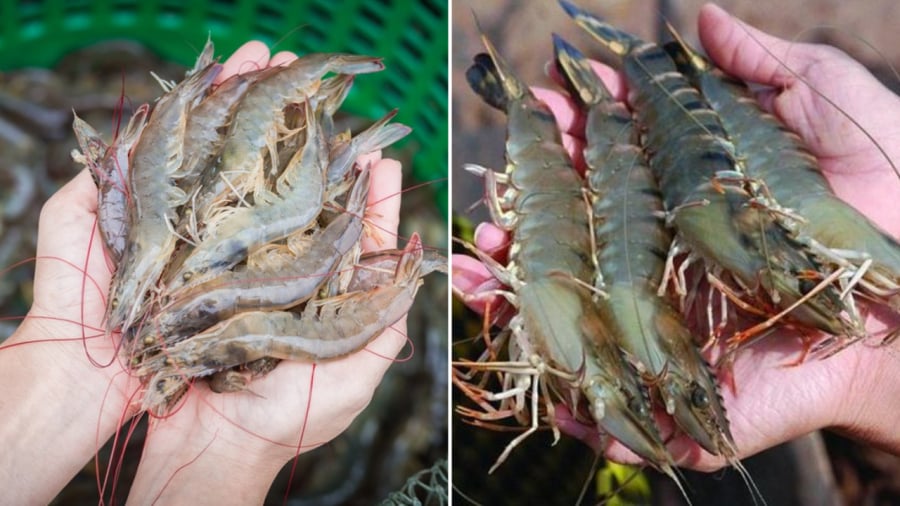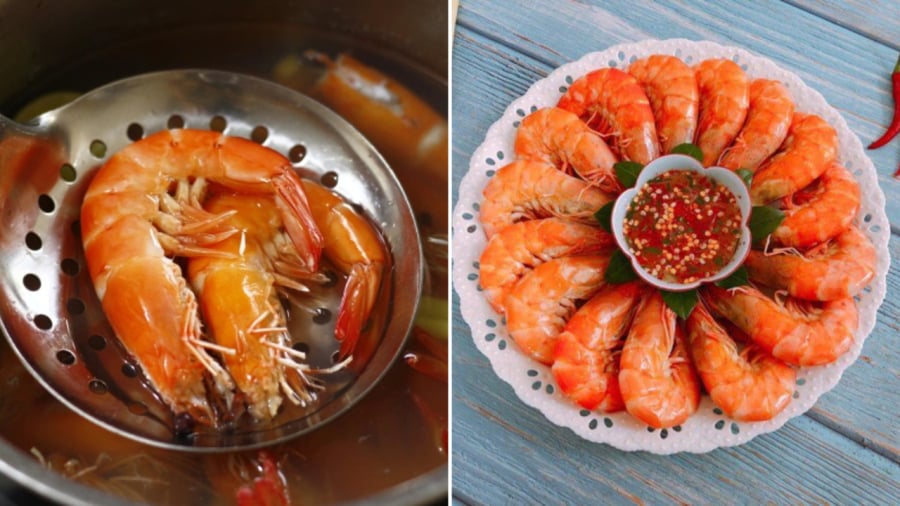Shrimp is a versatile ingredient loved by many. Boiling or steaming shrimp is one of the simplest ways to prepare it while retaining its natural flavor. Typically, people clean the shrimp and then place them in a pot of water with various seasonings such as salt, onion, and lemongrass, waiting for the shrimp to cook.
Although boiling shrimp is not a complex process, there are some tips and tricks to achieving a beautiful red color and avoiding any fishy taste.
Selecting the Best Shrimp
For boiled shrimp, the key to success lies in choosing fresh, lively shrimp. Opt for those with bright shells and black eyes, whose bodies move flexibly and whose legs and antennae are intact. Fresh shrimp will have a minimal fishy odor, and their taste will shine through any cooking method.
If you’re opting for frozen shrimp, it’s crucial to source them from a reputable supplier. Ensure the head and body are firmly attached, and neither has turned black. Avoid shrimp with a strong fishy smell or a soft, mushy texture.
Additionally, steer clear of shrimp that show abnormal swelling at the shell joints, as this indicates they have been injected with foreign substances to increase their weight.

Preparing the Shrimp
Proper shrimp preparation is essential before cooking. If using fresh, lively shrimp, it’s best to immerse them in ice water to stun them before cleaning. This makes the process easier while preserving the shrimp’s freshness.
Trim the long antennae and, if desired, remove the vein along the shrimp’s back and the waste pocket at its head to reduce any fishy odor and enhance its flavor.
Tips for Delicious Boiled Shrimp
- Boil Shrimp with Pandan Leaves
One secret to enhancing the flavor of boiled shrimp is to use pandan leaves (screwpine leaves). While commonly used for cooking rice, sticky rice, or desserts, pandan leaves can add a unique twist to boiled shrimp. Give it a try, and you’ll be delighted by the aroma and taste they impart.
Heat a pot of water on the stove, adding a pinch of salt and the cleaned pandan leaves. Once the water reaches a gentle simmer (around 85-90°C), carefully add the cleaned shrimp. Avoid waiting for a rolling boil, as this will overcook the shrimp. The gentle heat helps the shrimp retain their sweetness and texture. Pandan leaves not only neutralize any fishy odor but also infuse the shrimp with a wonderful fragrance.
Adjust the cooking time depending on the size and quantity of shrimp. Ensure there’s enough water to submerge all the shrimp for even cooking. When the shrimp turn red and their bodies curl slightly, they’re ready. Overcooking will cause the shrimp to curl tightly and dry out, so be mindful of the timing. Drain the shrimp and let them air dry before plating to avoid sogginess.

- Boil Shrimp with Alcohol
Another effective method to eliminate the fishy odor and enhance the shrimp’s color is to use alcohol.
After cleaning and drying the shrimp, marinate them briefly in a small amount of white alcohol or cooking wine. Prepare a pot of water with some crushed ginger and lemongrass. Add a pinch of salt to taste. When the water reaches a gentle simmer, add the shrimp.
Remove the shrimp once they turn red and curl slightly. This boiling method, combined with the ginger and lemongrass, effectively reduces any fishiness. The addition of alcohol further enhances the flavor and color of the shrimp.
So, when boiling shrimp, consider experimenting with pandan leaves alongside the traditional ginger and lemongrass. This unique approach will elevate the flavor and aroma of your shrimp dishes.






























